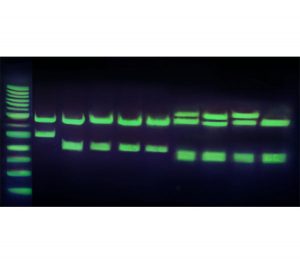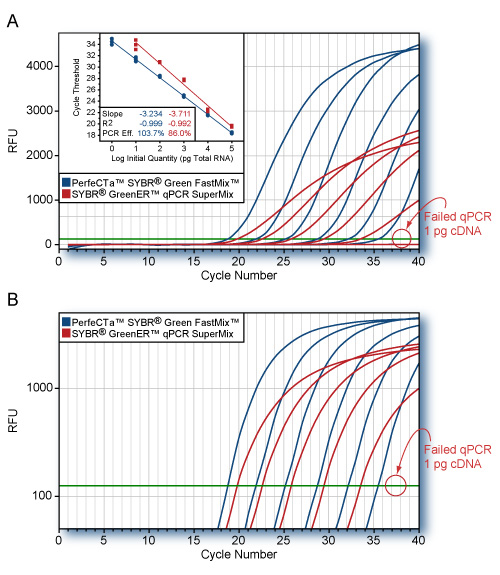OneScript Plus Reverse Transcriptase (PCR)
| Cart# | Product Name | Quantity |
|---|---|---|
| G237 | OneScript Plus Reverse Transcriptase (PCR) | 100 x 20 µl reactions |
Documents
Description
Description
Synthesize cDNA from complex RNA templates (i.e. secondary structures and high GC content) with abm’s OneScript ® Plus Reverse Transcriptase. Engineered to perform under high temperatures (45°C – 55°C), abm’s OneScript® Plus Reverse Transcriptase can synthesize full-length cDNA libraries from RNA templates up to 15kb in length. In addition, OneScript®Plus Reverse Transcriptase has outstanding proofreading ability due to the presence of a fidelity-enhancing subunit, thus making this RTase an excellent choice for whole genome sequencing.
Form
Enzyme supplied with 5X RT buffer
Concentration
200 U/ul
Shipping Condition
Dry Ice
Storage Condition
Store all components at -20 °C.
Notes
This product is ISO-13485 certified.
Application
• Synthesizing cDNA from a ssRNA
• DNA primer extension
• Sequencing dsDNA
• Constructing cDNA library
• Constructing libraries for serial analysis for gene expression (SAGE)
• Synthesizing cDNA in rapid amplification of cDNA ends (3’ & 5’ RACE)
• Producing template for use in RT-PCR or real-time RT-PCR
• Labelling 3′-end of duplex DNA via end-filling reactions
• Generating probes for hybridization











